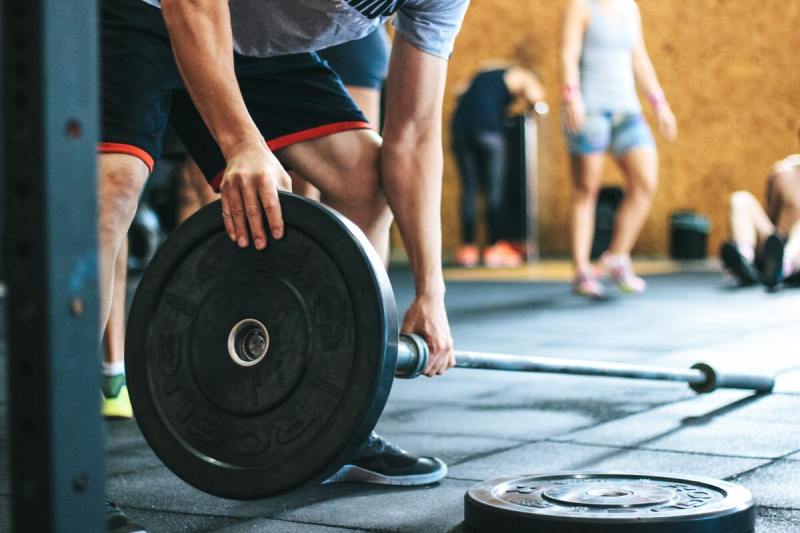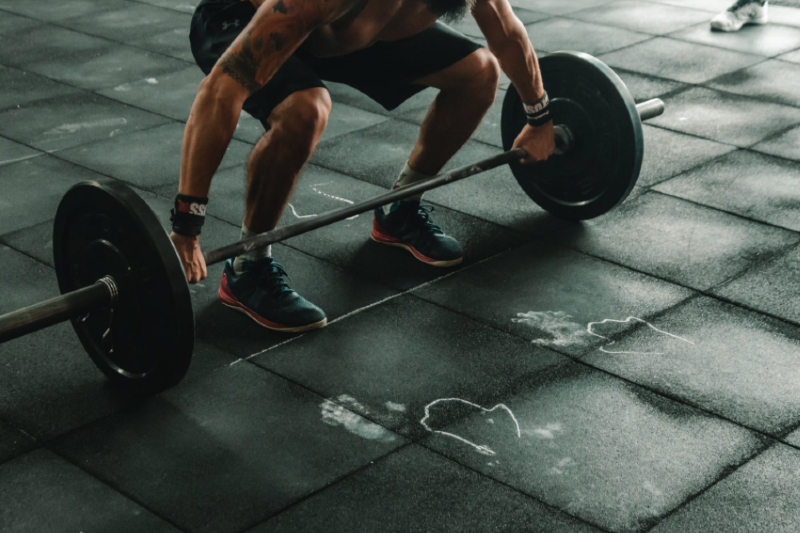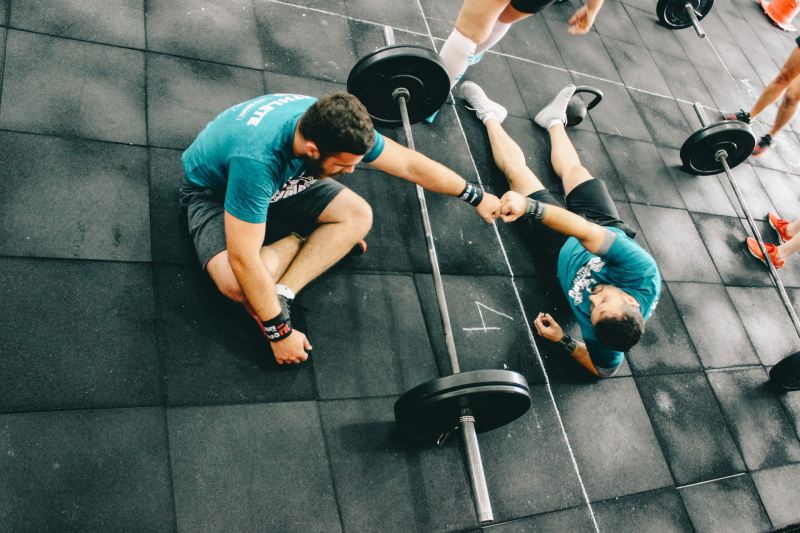
Throughout the hustle and bustle of our daily routines, we try to take as much time as we can to dedicate to exercise. Many of us focus on cardio workouts and building our upper body strength. This is crucial to our fitness, but we should also give more attention to the importance of lower body strength as it relates to our skeletal health.
The muscles in your leg are activated more than any other muscle in the body. You’d be surprised about the wide range of functions that your leg muscles are involved in, and having stronger leg muscles can be beneficial for your overall fitness. To help get this into gear, you may consider doing a barbell leg workout.

Anatomy of the lower body
The upper anterior muscles are located in the front position of the upper thighs and consist of the quadriceps. They provide balance and are responsible for bending and extending our knees. The five medial muscles, like the adductors, are located at the inner thigh and allow the flexing and extending of the thigh. The upper posterior muscles, known as the hamstrings, begin underneath the glutes and extend down to the knees and help move our legs backward and forwards.
The lower anterior muscles, like the extensors, for example, span from knee to foot and help with raising your feet up and down, as well as stretching your toes. The lateral muscles travel along the outer leg, starting below the knee and stretching down to the ankle, and offer stability to our feet when we walk and run. The calves and flexors are some of the posterior muscles located at the back of your lower legs that help with jumping and stabilizing the legs for posture support.

What are the benefits of training with a barbell?
Improved strength
In addition to our focus on leg muscles, barbells can be great for the total body. Working out with barbells helps to build bigger muscles, like the lats or the back. The enhanced strength also benefits the torso and provides some great balance to the body.
Stability
To properly execute barbell workouts, your abdominal and pelvic muscles must be activated, as well as your glutes. Engaging all your muscles can upgrade your spinal stability. Possessing adequate neuromuscular control is necessary for proper range of motion, the ability to raise and rotate your legs, as well as preventing or reducing pain in the back and lower body.
Daily support
Barbell workouts are advantageous for carrying out the eccentric and concentric movements like pushing, pulling, and resisting that we perform each day. These are the daily actions like pulling or pushing a door, going up and down a flight of stairs, and lifting your baby. Even just picking up an object from the floor requires both eccentric and concentric contractions, with the muscles lengthening in an eccentric contraction to bend down and shortening in a concentric contraction to rise back up.

8 lower body barbell exercises
1. Back squats
Back squats are a great leg day workout for loading the glutes, developing strength, and building larger muscles.
Instructions:
- To begin, stand upright with your chest out and feet apart at shoulder width. The barbell should be placed along your upper traps.
- With your chest up and a straightened back, inhale as you bend your hips and knees into a sitting position.
- Continue to position your body lower until your thighs are parallel to the floor, with knees bent at 90 degrees.
- You’ll exhale as you press through your heels to raise your body back upright.
- Do eight to ten reps.
2. Walking lunges
Walking lunges are an all-encompassing leg day workout. This workout provides ankle support and enhances your balance. Various muscles, like those in your hips, knees, and legs, will be engaged and strengthened.
Instructions:
- Stand upright with a barbell resting on your upper back. Start by stepping one foot forward and bending your knee to 90 degrees.
- Lower the back knee so that your thigh is parallel to the floor.
- Hold this stance, and then switch legs. Follow up by doing lunges with the back leg taking the lead. Lunge with every step as you walk forward.
- Complete 50 lunges for a killer quad exercise.
3. Conventional deadlift
Conventional deadlifts are great leg workouts for men. The deadlifts are effective for maintaining function for daily activities. They’re also great for working the glutes and hips, as well as supporting your flexibility.
Instructions:
- Have a barbell positioned on the floor in front of you while you are standing. Squat down to grip the barbell on the outside of your legs with your feet hip-width apart.
- Set your hips back with slightly bent knees to lift the barbell, and engage your core as you do the lifting. Try to align your weight with the middle of your foot.
- Come up to a standing position with your back straight and your chest up.
- Set your hips back to lower the barbell down as you finish the set.
- Do three to four sets of ten reps to complete the deadlifts.
4. Step ups
Step-ups are a great leg workout for strengthening your quads and glutes while also working on the hamstrings and calves. This workout can be done with barbells for extra intensity, and you can do this on the stairs or in front of a chair or bench.
Instructions:
- Start by standing in front of a knee-level bench.
- With your right foot, step up onto the bench. Keep your core and glutes engaged.
- Follow up by stepping your left leg up onto the bench.
- Continue by stepping down with your right foot first, followed by the left.
- For 15 to 20 reps, you’ll lead with your right foot and then change to lead with the left.
5. Good mornings
If you want to give variety to your leg workouts with barbells, consider doing Good Mornings to work your hamstrings and glutes. This exercise is not only great for lower body strength, but it’s effective for core strengthening as well.
Instructions:
- Start this workout in a stance with your feet spread shoulder-width apart. Slightly bend your knees with the barbell on your shoulders.
- Breathe in as you brace your abs and upper back. Breathe out as you bend your hips with your upper body positioned forward, stopping once your body is parallel to the floor.
- Inhale as you return to your starting position. If you’re a beginner, you can start by doing three sets of three reps.
6. Reverse lunges
The Reverse Lunges are another effective barbell leg exercise. You can do this exercise at home to maximize your glute strength and tighten up your lower body strength.
Instructions:
- Stand on a foundation while holding your barbells in your hands.
- Step one foot backward off the platform to drop into a deep lunge. Your front knee should be aligned with your toe, while the back knee is nearly touching the floor.
- With a straight back and tilted torso, hinge from your hips and push through your heels on the platform to return to your original position.
- Complete 10 to 12 reps and then switch sides.
7. Barbell hip thrusts
An amazing leg workout at the gym is the Barbell Hip Thrust. This workout is efficient for increasing power and muscle size!
Instructions:
- Position yourself so your shoulder blades are on the bench. Your body is hanging off the side of the bench with the knees bent 90 degrees and feet flat on the floor at hip-width apart.
- While holding the barbell across the hips, press your hips up toward the sky and tighten your glutes.
- Slowly lower your hips back down until your glutes are an inch above the floor before lifting back up.
- Repeat for ten reps.
8. Farmer’s walk
The Farmer’s Walk, also called the Farmer’s Carry, is another type of barbell workout. This workout is great for leg strength while enhancing your core and overall functionality.
Instructions:
- Stand upright with your arms at your sides. Hold your short barbell in one hand.
- Walk forward for 15 paces with your shoulders even and your chest out. Keep your core tightened throughout.
- Turn around and repeat this, walking back to your original station.
- After this, switch arms and repeat these actions. Do three laps for both the left and right sides.
Editors' Recommendations
- The 3 best punching bag workouts to transform your fitness routine
- The best shoulder workouts: These are the exercises you need
- 5 forearm workouts designed for Olympic climbers
- This 15-minute home workout routine targets your core, glutes, and thighs in four moves
- Core workouts guide: 5 effective exercises for anyone who hates sit-ups




